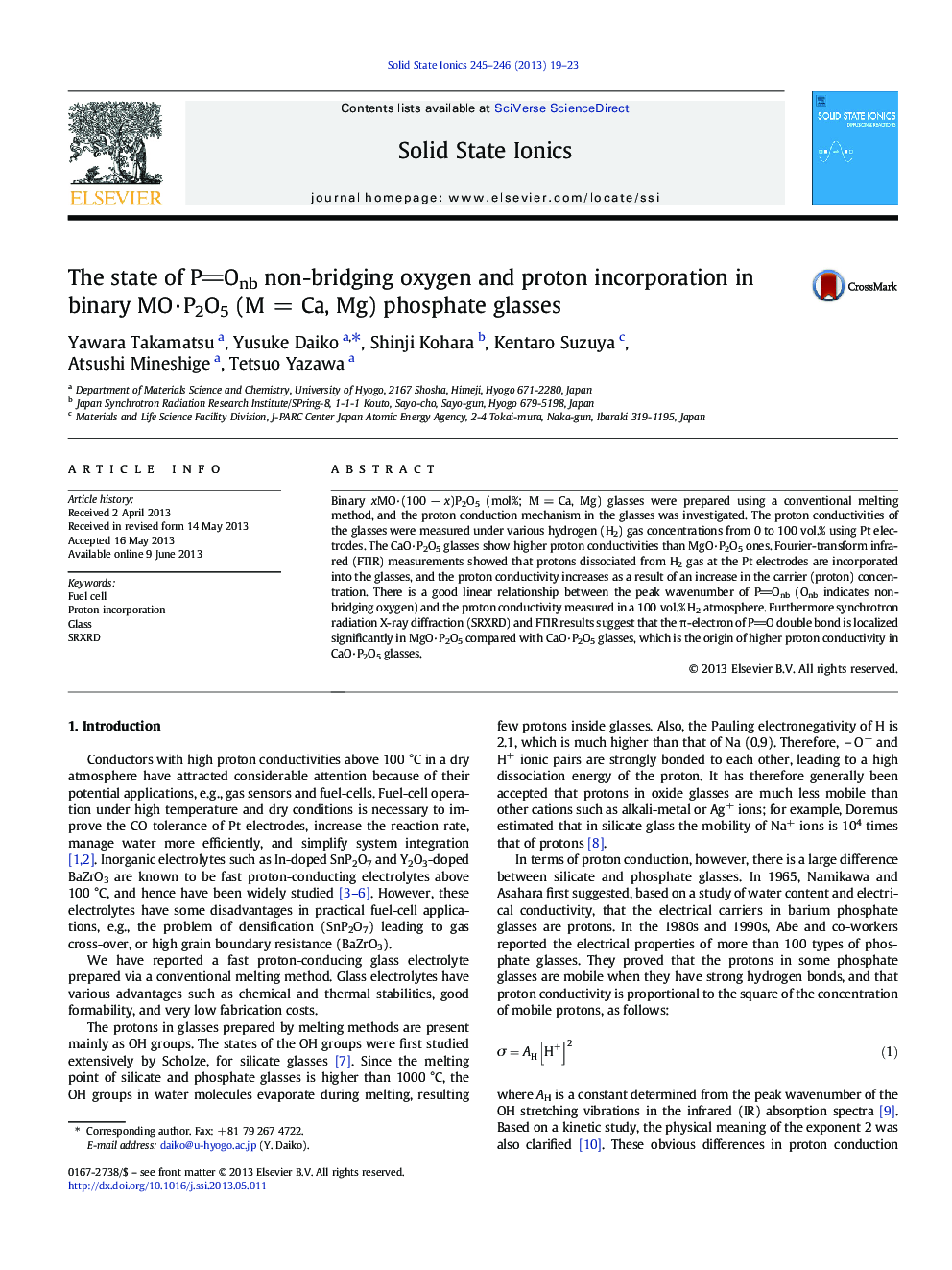| Article ID | Journal | Published Year | Pages | File Type |
|---|---|---|---|---|
| 7746812 | Solid State Ionics | 2013 | 5 Pages |
Abstract
Binary xMO·(100 â x)P2O5 (mol%; M = Ca, Mg) glasses were prepared using a conventional melting method, and the proton conduction mechanism in the glasses was investigated. The proton conductivities of the glasses were measured under various hydrogen (H2) gas concentrations from 0 to 100 vol.% using Pt electrodes. The CaO·P2O5 glasses show higher proton conductivities than MgO·P2O5 ones. Fourier-transform infrared (FTIR) measurements showed that protons dissociated from H2 gas at the Pt electrodes are incorporated into the glasses, and the proton conductivity increases as a result of an increase in the carrier (proton) concentration. There is a good linear relationship between the peak wavenumber of POnb (Onb indicates non-bridging oxygen) and the proton conductivity measured in a 100 vol.% H2 atmosphere. Furthermore synchrotron radiation X-ray diffraction (SRXRD) and FTIR results suggest that the Ï-electron of PO double bond is localized significantly in MgO·P2O5 compared with CaO·P2O5 glasses, which is the origin of higher proton conductivity in CaO·P2O5 glasses.
Related Topics
Physical Sciences and Engineering
Chemistry
Electrochemistry
Authors
Yawara Takamatsu, Yusuke Daiko, Shinji Kohara, Kentaro Suzuya, Atsushi Mineshige, Tetsuo Yazawa,
